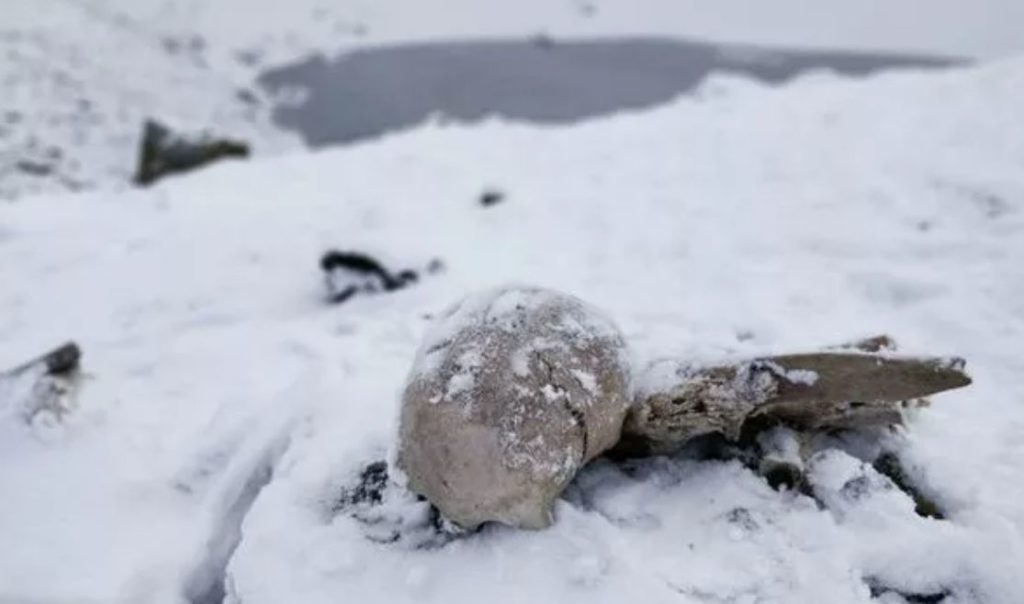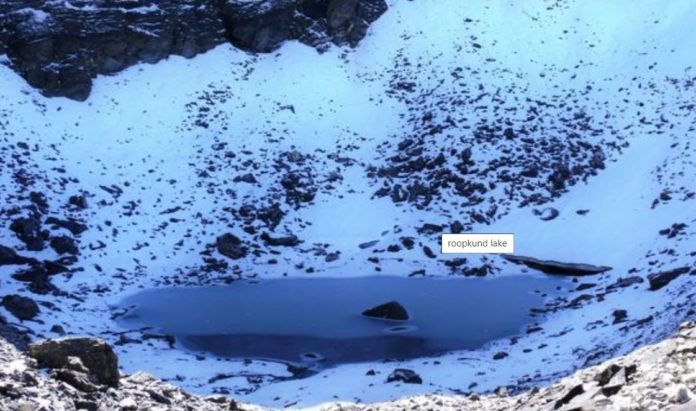When the lake shrinks, the remains of up to 800 people appear on its shore. Many researchers have tried to shed light on the appearance of these remains for many years.
Scientists have conducted a new study of the remains found in the Roopkund glacial lake, which is located in the Himalayan mountain range.
- Scientists in Fear of This New Predator From Red Sea Eating Native Species in Mediterranean
- Does This Mean We Stopped Being Animal and Started Being Human Due to ‘Copy Paste’ Errors?
- The One Lifestyle Choice That Could Reduce Your Heart Disease Risk By More Than 22%
- Aging: This Is What Happens Inside Your Body Right After Exercise
- Immune-Boosting Drink that Mimics Fasting to Reduce Fat – Scientists ‘Were Surprised’ By New Findings
The lake, which is located at an altitude of 5029 meters above sea level, either shrinks or expands with the seasons. When it shrinks, the remains of up to 800 people appear on its banks.

Many researchers have tried to shed light on the appearance of these remains for many years. According to one version, it was a local civilization that was destroyed during the cataclysm. Another theory was that it was an army that died in battle while on the shallow shores of Lake Roopkund. it was also thought to be the burial site of a local village affected by the epidemic.
But, as the latest research has shown, none of these events could be true.

Researchers from 16 different institutions analyzed some of the remains and found that the remains were characterized by genetic diversity. This suggests that all of the individuals were from different circles and groups.
For example, it was found that some of the faces were similar to people living in southeast Asia, while others were more similar to the inhabitants of modern Europe, especially the inhabitants of the Greek island of Crete. Moreover, no weapons were found for these people, which excludes the possibility of their death in battle. Both men and women have been found, and some people have died for over 1000 years.

- Scientists in Fear of This New Predator From Red Sea Eating Native Species in Mediterranean
- Does This Mean We Stopped Being Animal and Started Being Human Due to ‘Copy Paste’ Errors?
- The One Lifestyle Choice That Could Reduce Your Heart Disease Risk By More Than 22%
- Aging: This Is What Happens Inside Your Body Right After Exercise
- Immune-Boosting Drink that Mimics Fasting to Reduce Fat – Scientists ‘Were Surprised’ By New Findings
“Radiocarbon dating indicates that these remains were not deposited simultaneously. A group of 23 individuals have ancestry that falls within the range of variation of present-day South Asians. A further 14 have ancestry typical of the eastern Mediterranean. We also identify one individual with Southeast Asian-related ancestry. All individuals with origins associated with South Asia date back to 800 AD,” the study said.
